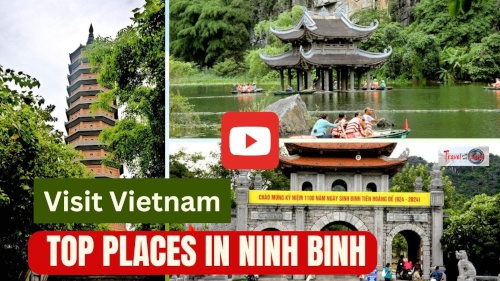We have heard about Ninh Binh in Vietnam for a long time. Many of our friends have recommended not to miss Ninh Binh if we ever visit Vietnam. So, after joining a group tour to Hanoi, we decided to extend our visit and have an overnight stay in Ninh Binh.
After lunch, we left Hanoi and arrived at Ninh Binh in slightly more than two hours. Since we only planned an overnight stay, we have picked to visit the most popular places, which include joining the Trang An boat tour to visit the Bai Dinh Pagoda and Hoa Lư Ancient Capital.

1. Bai Dinh Temple
The temple consists of two sections. The old temple, which dates back to the 11th century, is located on a small hill next to the new complex, which was constructed and completed in 2010.
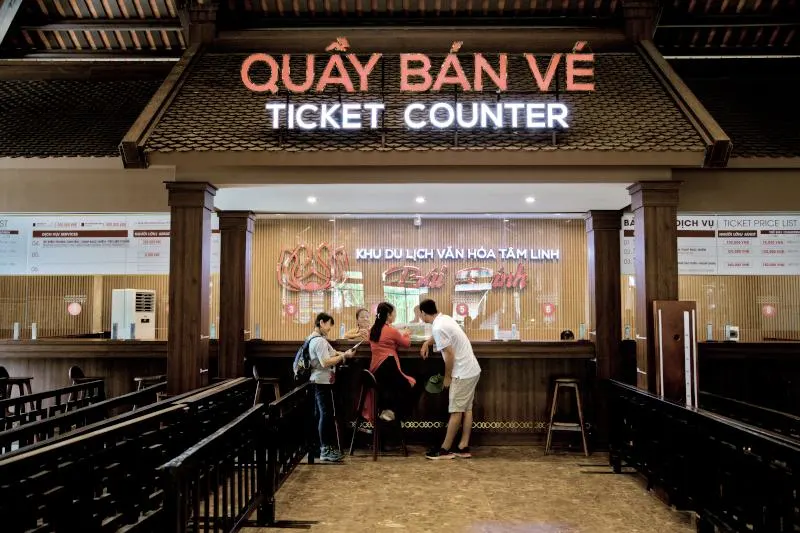
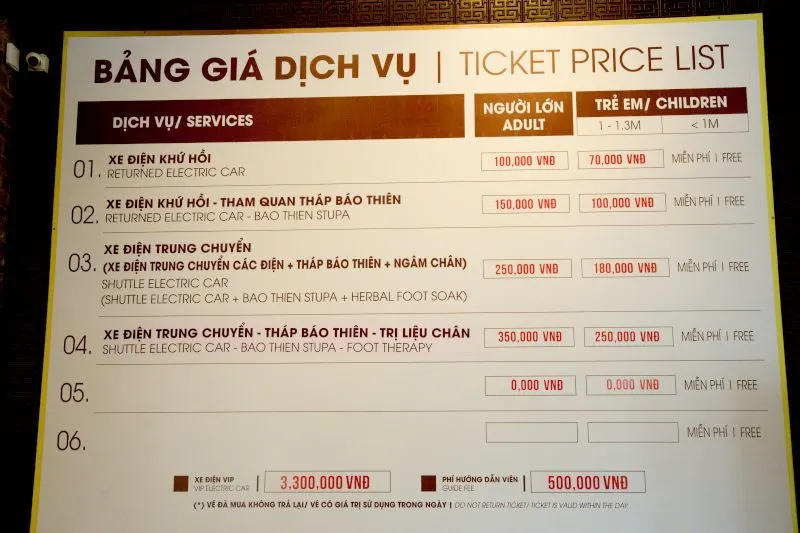
After purchasing the entrance tickets, we took the electric car to the Pearl Well, which is close to the entrance of the Old Temple.
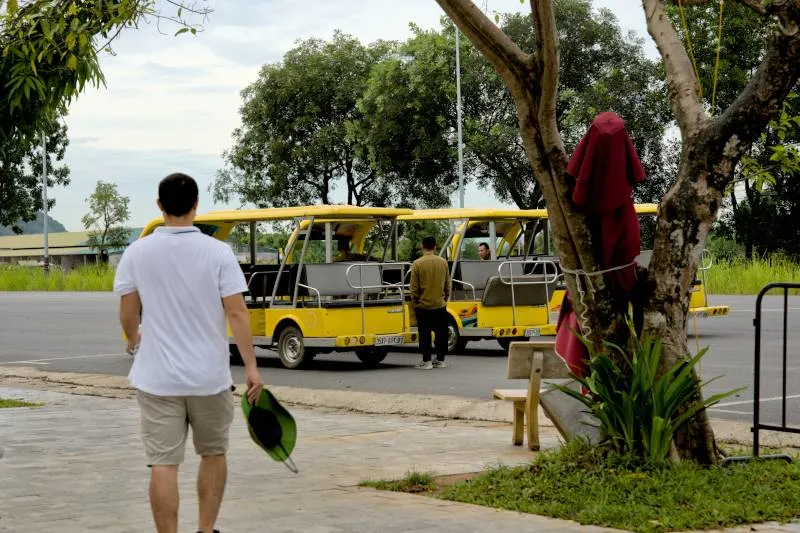
The old Bái Đính temple is located on a small hill, approximately 800 meters from the new temple. There are over 300 stone steps leading to the entrance. Nestled in the mountainside, the temple is situated within several small caves.
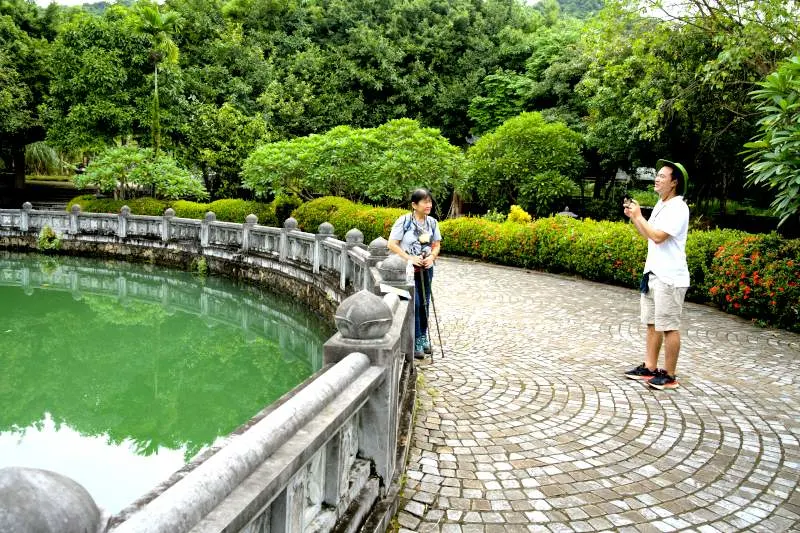
Pagoda Three Gates
We walked from the well to the ancient Pagoda Three Gates through a pavement with two rows of Arhat statues on both sides. Then, the pavement turned into a few stairs before we reached the three gates.
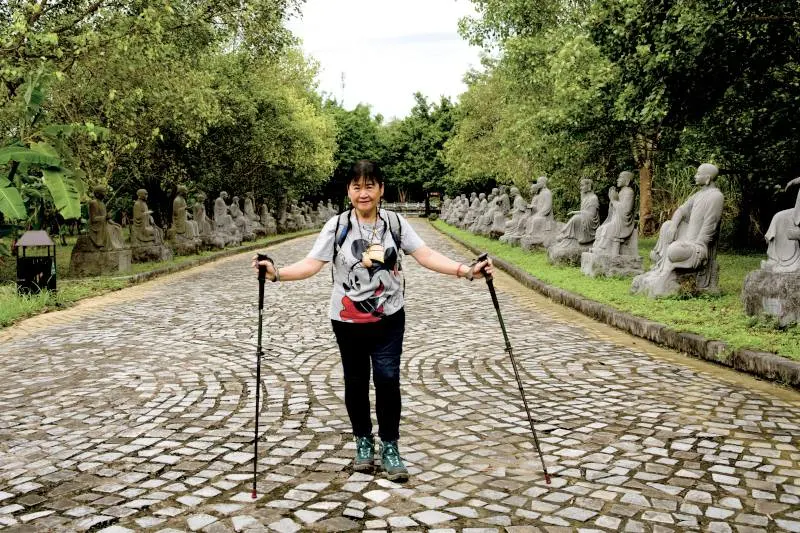
The Ancient Pagoda Three Gates, also known as Tam Quan Gate, is the main entrance to the temple.
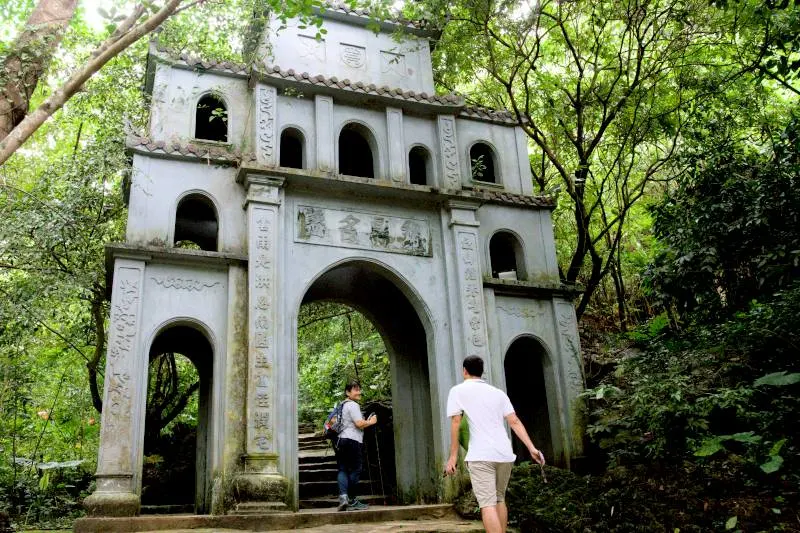
Buddha Worshipping Cave
We continued to walk up the stairs to reach the Buddha Worshipping Cave. Inside the cave, there were many different statues of local deities. We had to pass a narrow passage emerging from the other side, leading to the Thanh Cao Son Temple.
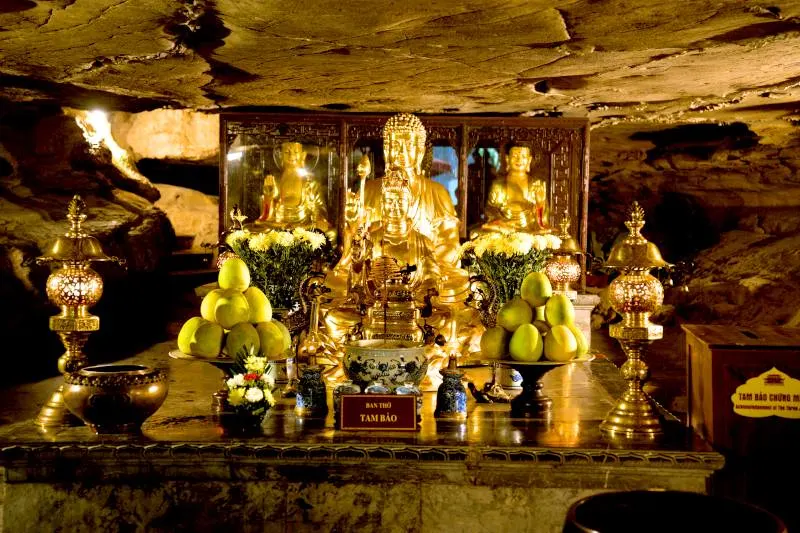
Thanh Cao Son Temple
We noticed that most of the words written in the temples are in Chinese, not the Romanized Vietnamese language we are familiar with nowadays. This indicates a powerful influence of Chinese culture in Vietnam's past. Our guide told us that Chinese characters were part of the Vietnamese writing system before developing the modern alphabet.
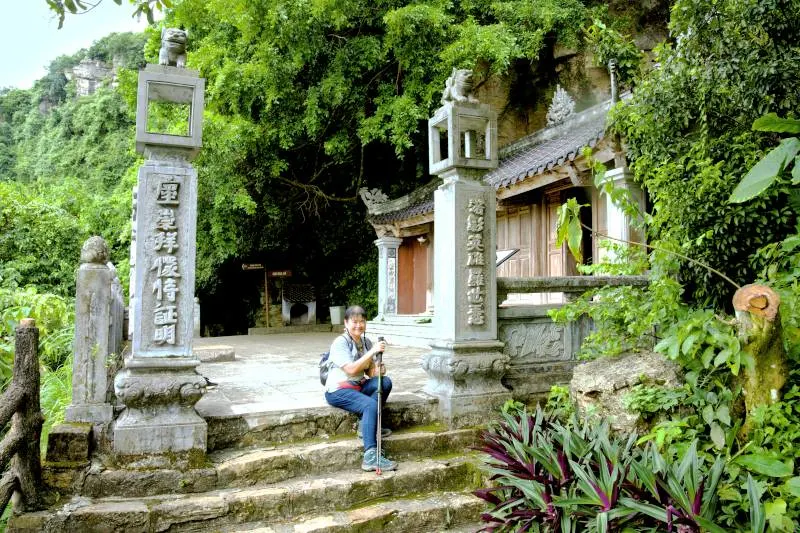
Ancient Medicinal Plant Valley
Not far from the Cao Son Temple is the Ancient Medicinal Plant Valley, a palace where different types of medicinal plants are cultivated. Since it was a dead end, we had to return to the Buddha Worshipping Cave to continue exploring the next temple.
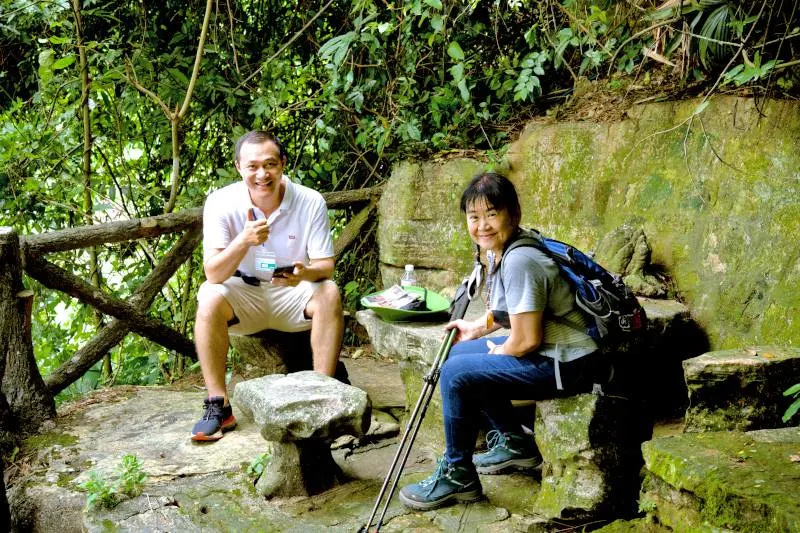
Nguyen Minh Khong Temple
Not far from the Buddha Worshipping Cave is the Nguyen Minh Khong Temple (yes, there are many temples here!), dedicated to Zen Master Nguyen Minh Khong, a prominent figure of the Ly Dynasty (1009-1225) known for his contributions to Buddhism and traditional medicine.
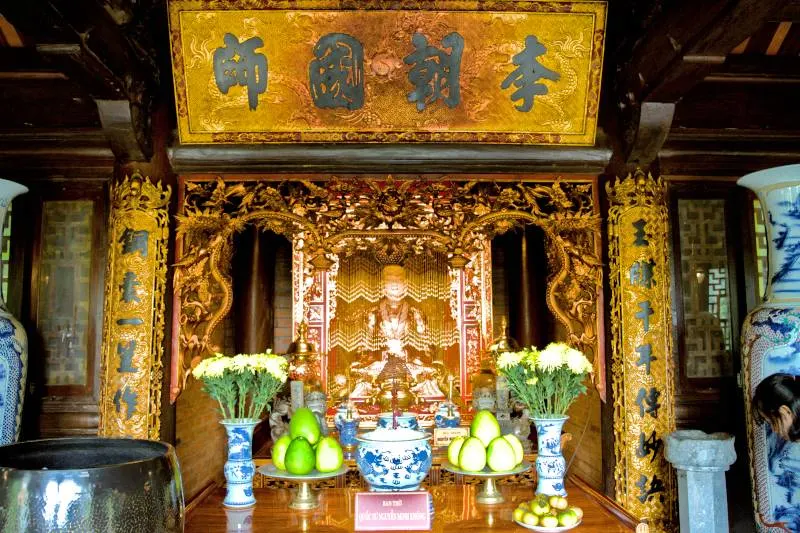
Mother Goddess Worshiping Cave
The last cave we visited was the Mother Goddess Worshiping Cave. There are many stalactites and stalagmites with magical shapes inside. Cold water falling from the ceiling forms a Well of God in the middle of the cave. There are also many bats hanging from the ceiling.
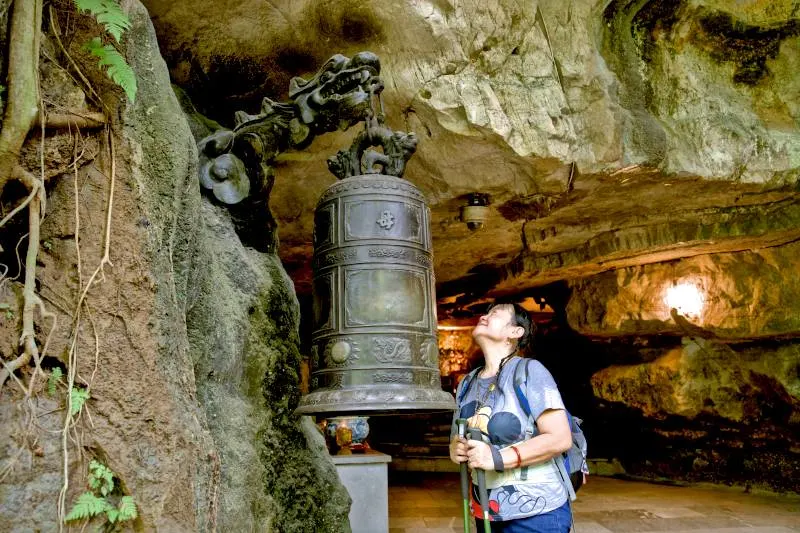
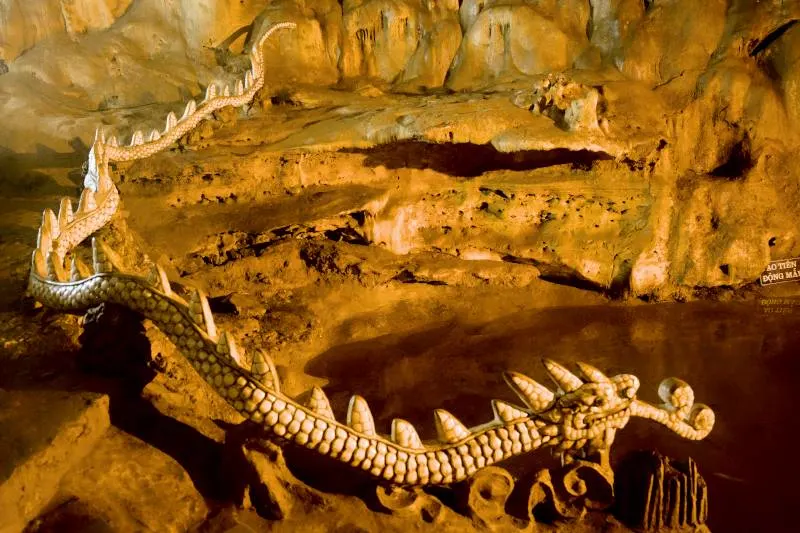
We returned to the entrance and headed to the new complex.
Three Period Hall
The first site we visited was the Three Period Hall. The hall has three vast statues of the Buddhas: Amitabha Buddha (Past Buddha) on the left, Shakyamuni Buddha (Present Buddha) in the center, and Maitreya Buddha (Future Buddha) on the right. Each statue is about 7.2 meters tall and weighs around 50 tons, making it among Vietnam's most significant.
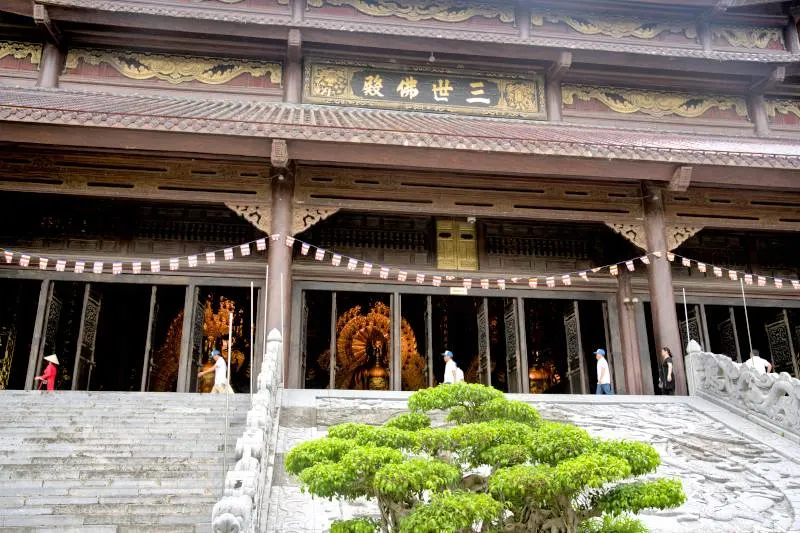
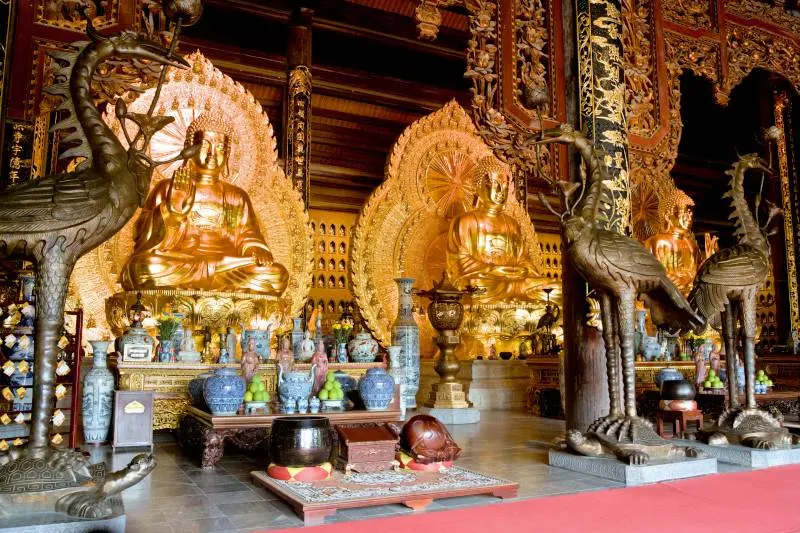
Bao Thien Stupa
The second spiritual site we visited was Bao Thien Stupa. The stupa is 100 meters high and has 13 floors, making it one of the tallest in Asia. It sits on a solid octagonal base with a circumference of 30 meters. Inside the stupa is a gold-plated statue of Shakyamuni Buddha on a beautifully carved altar.
We climbed the stairs to the first floor and then took the elevator to the top floor to take a panoramic view of the entire Bai Dinh complex and its surroundings.
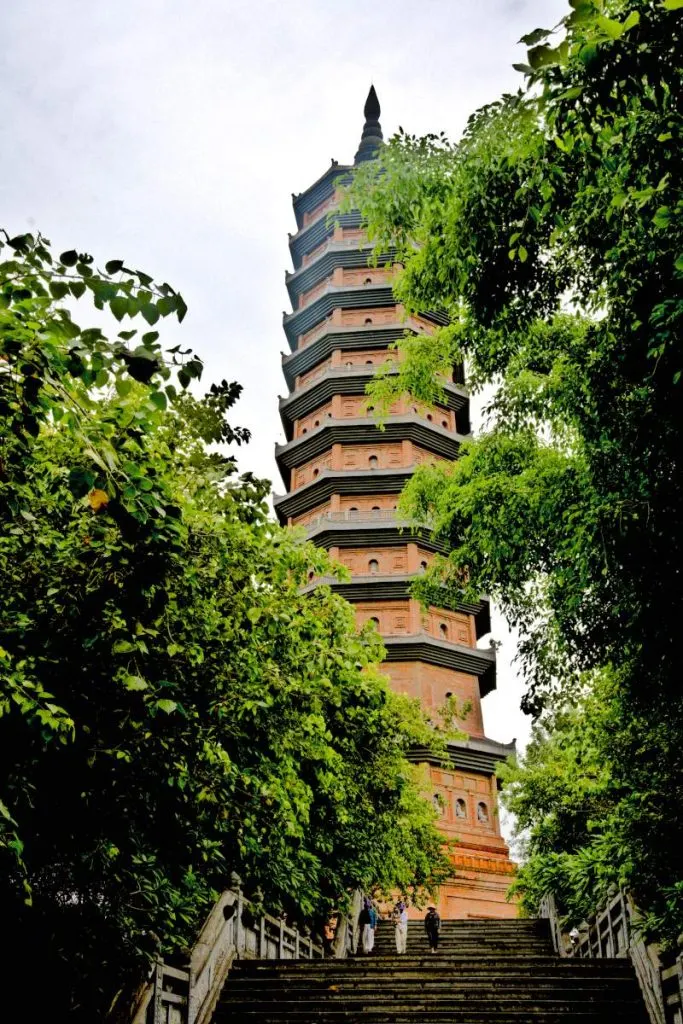
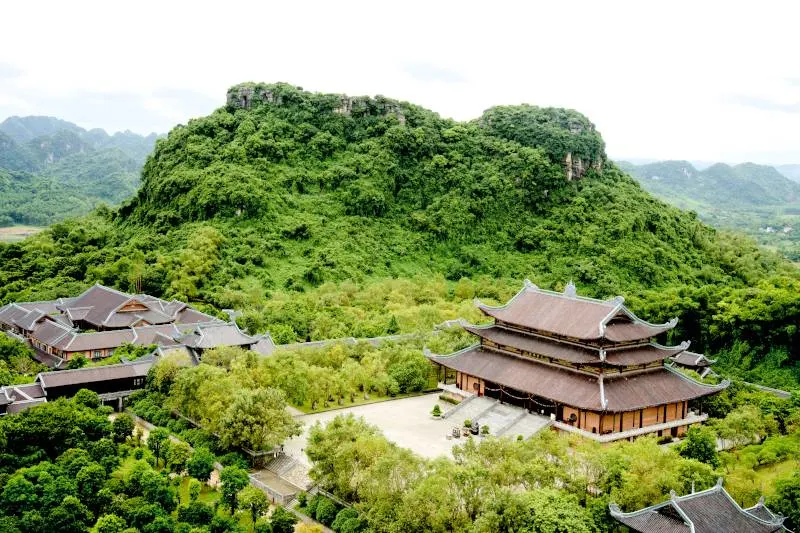
Buddha Shakyamuni Hall
Next, we move on to the Buddha Shakyamuni Hall. The hall is approximately 34 meters high and covers an area of 2000 square meters. At the center of the hall stands the statue of Shakyamuni Buddha, which is 10 meters tall and weighs around 100 tons. The statue is crafted with bronze and is decorated with gold plating, making it a striking centerpiece of the hall.
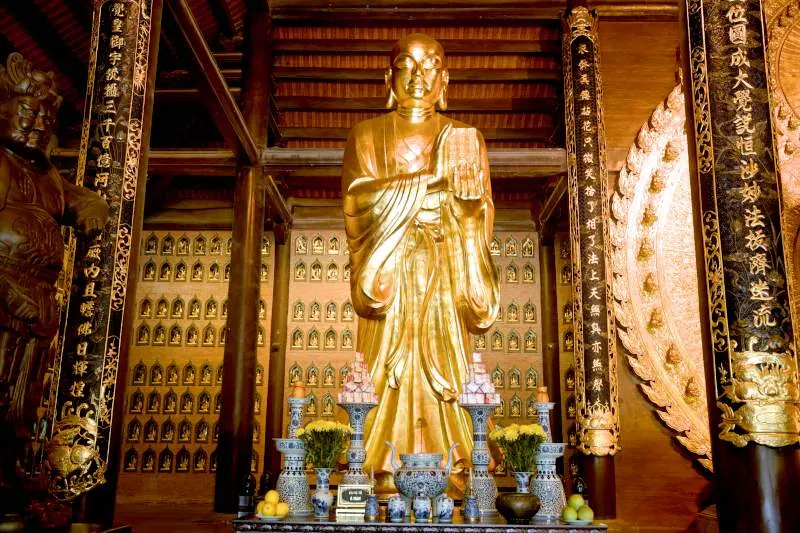
To the left and right of the Buddha are his disciples, Ananda and Mahakasyapa. Besides, there are more than 1600 smaller Buddha statues on the wall.
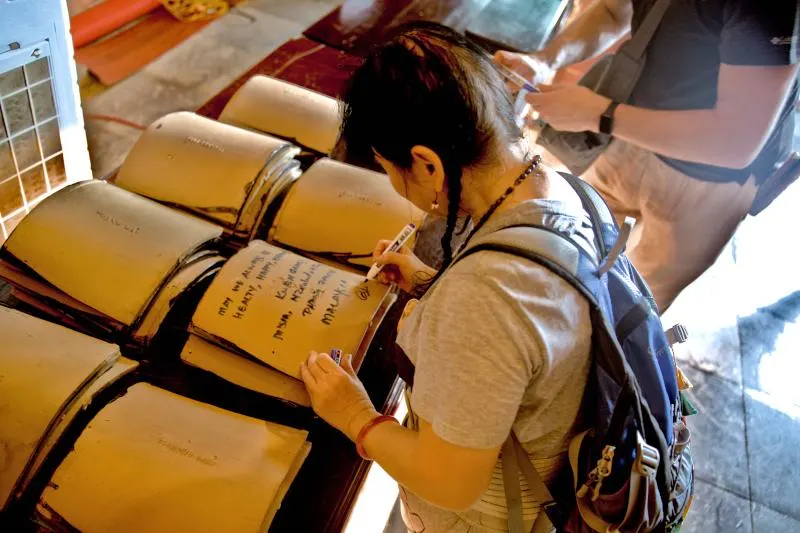
The Arhat Corridor
We walk to the Kuan-Yin Hall through the Arhat Corridor. The corridor is lined with 500 statues of Arhat, each carved from stone and ranging in height from 1.5 to 2 meters. Each statue has a unique facial expression and posture, and the front pedestals of the statues are engraved with names in Vietnamese and Chinese.
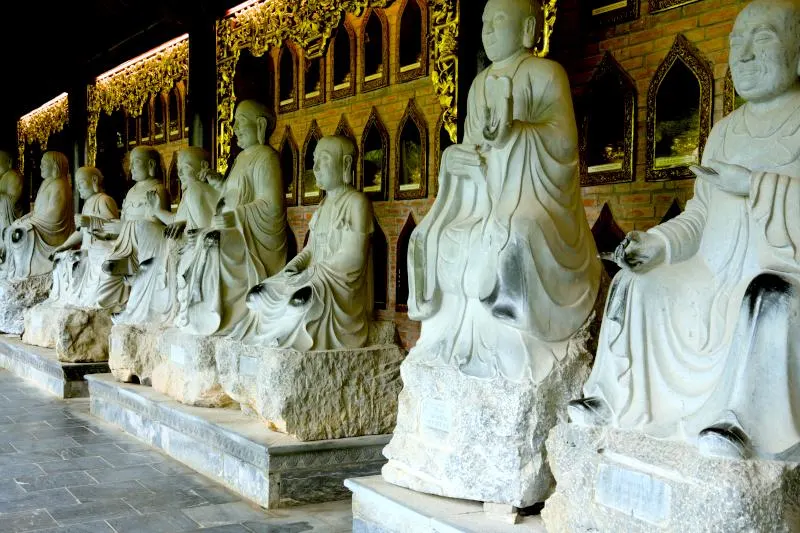
Kuan-Yin Hall
At the center of the hall stands a giant statue of Kuan-Yin with multiple arms, symbolizing her ability to assist many people simultaneously.
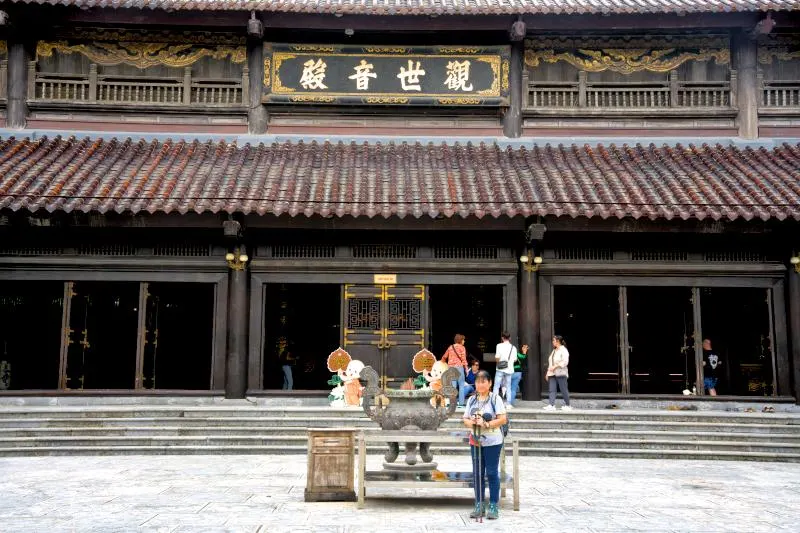
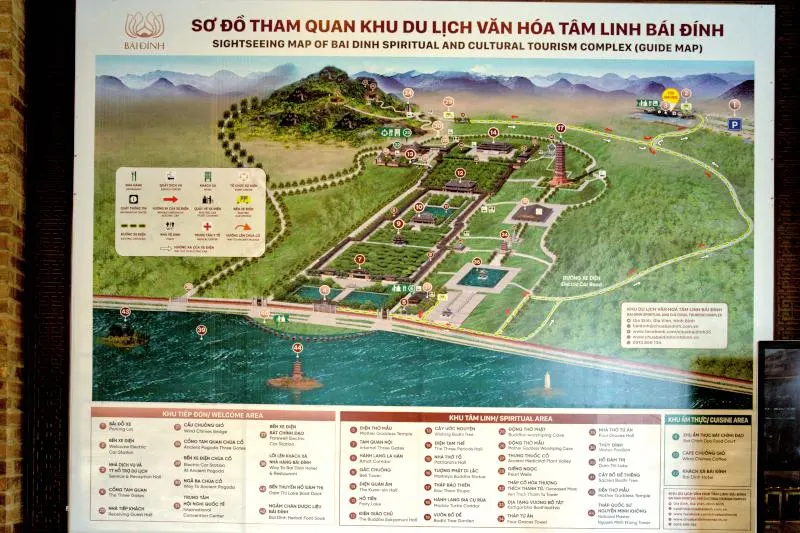
The above are all the sites we visited at Bai Dinh Temple. A half-day tour should be enough for casual visitors, as most temples have similar architecture. However, if you want to delve deeper into the meaning and history, you'll need to spend more time than we did. I have a map showing all the places you can visit if you have enough time.
2. Hoa Lư Ancient Capital
Hoa Lu was the ancient capital of the early Vietnamese kingdom Dai Co Viet from 968 to 1010. It is one of the four core areas of the Trang An Scenic Landscape Complex, recognized as a UNESCO World Heritage Site since 2014. The four areas include Hoa Lu Ancient Capital, Tam Coc—Bich Dong, Trang An Boat Tour, and Hoa Lu Special-Use Forest. During this trip, we visited the ancient capital and took a boat tour of the ecological tourist area.
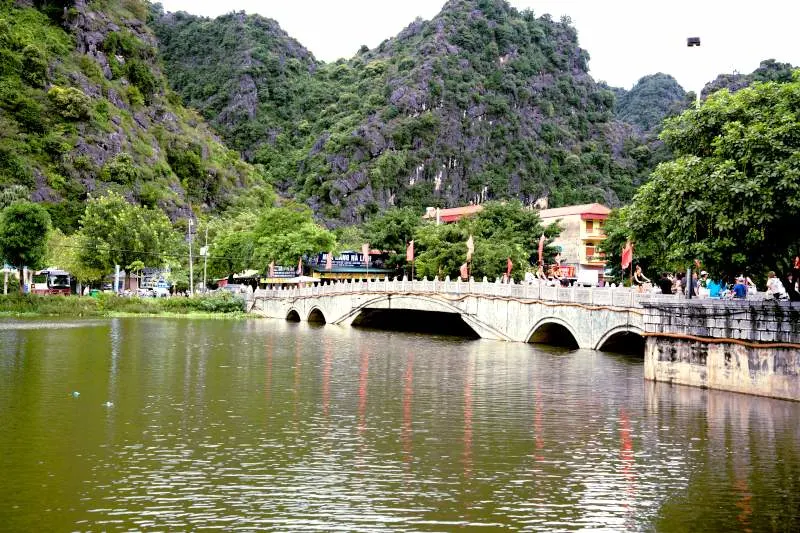
We parked our car on the opposite side of the road and slowly walked across a bridge over the Sao Khe River towards the main entrance of the ancient capital.
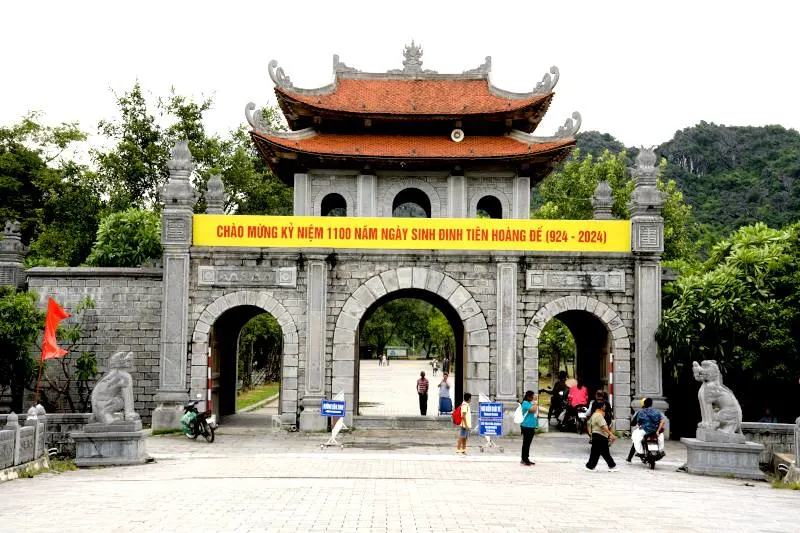
After passing the main entrance, we first visited the Dinh Tien Hoang Temple.
Dinh Tien Hoang Temple
Dinh Tien Hoang Temple is dedicated to King Dinh Tien Hoang (also known as Dinh Bo Linh), the first emperor of the Dinh dynasty. He played a crucial role in unifying Vietnam in the 10th century. He rose to power in 968 after defeating twelve rival warlords, marking the establishment of a unified Vietnamese state known as Đại Cồ Việt. His rule came to an end with his assassination in 979.
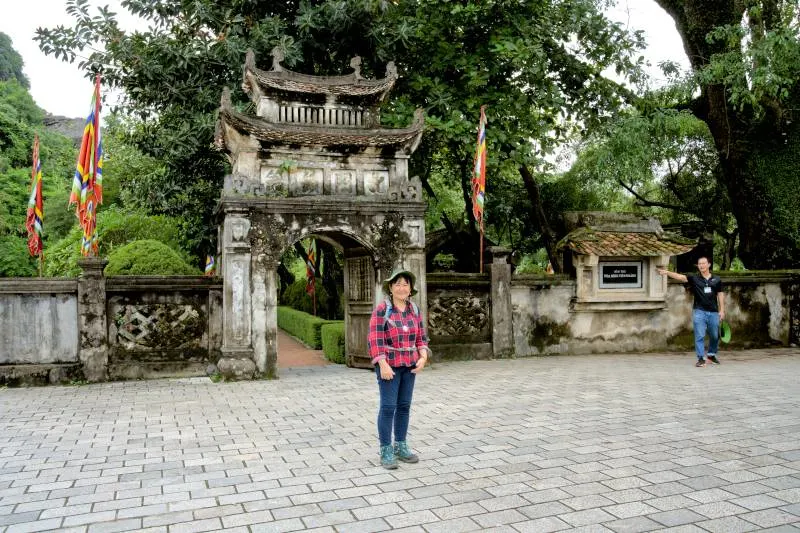
The temple is divided into three sections: Ngo Mon Gate serves as the entrance, Thien Huong is designated for incense offerings and prayers, and Chinh Cung, the innermost sanctum, houses the statue of King Dinh Tien Hoang and altars for his sons.
The temple has intricate wood and stone carvings, especially around the ceremonial bed (Long Sàng), and various sculptures depicting dragons and other mythical creatures.
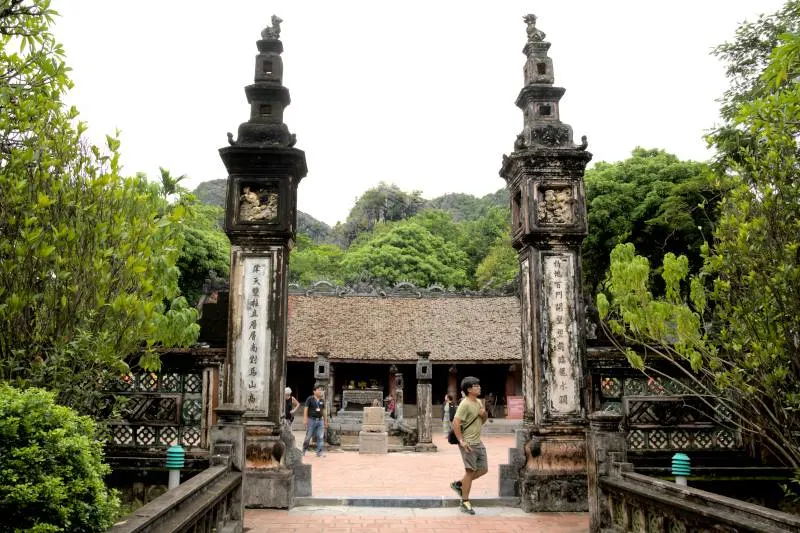
The prominent feature is the dragon bed in the temple's dragon yard. It has intricate carvings of a dragon representing imperial power and authority. The bed was used as a ceremonial platform for important rituals and offerings.
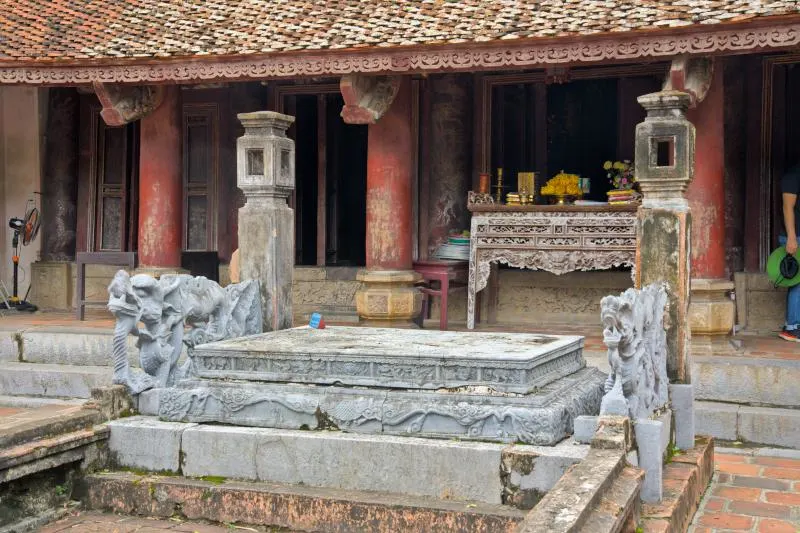
Our guide, Andy, also pointed out the tree named Kim Giao. In the past, the wood of this tree was used to make chopsticks. The food served to the king was tested to ensure it was not poisonous. If the food is poisonous, the color of the chopsticks will change.
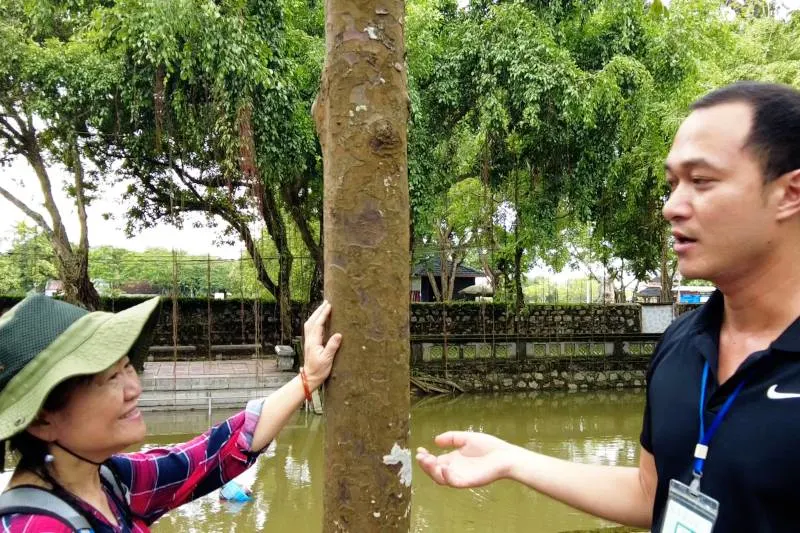

Our guide mentioned that King Dinh built the palace here but was destroyed over the years. The temple we see now was built in the 17th century.
Temple of the Le Dai Hanh King
After Dinh Tien Hoang's murder, Vietnam fell into chaos, leading to a power vacuum and the eventual downfall of the Dinh dynasty. Without strong leadership, Lê Hoàn, the chief commander of Dinh Tien Hoang's army, seized the opportunity. He overthrew the young emperor and eliminated rivals at court, consolidating his power.

King Le achieved two glorious feats: first, defeating the Song troops to protect the North, and second, repelling the Champa army to restore peace to the South. Following his military victory, Lê Hoàn declared himself emperor, marking the beginning of the Early Lê dynasty (980–1009).
In the center of the main temple is a statue of King Lê Đại Hành, sitting on his throne. To his left is a statue of Queen Dương Vân Nga, who was married to both Dinh Tien Hoang and Lê Hoàn. On his right is a statue of Lê Ngoa Trieu, one of his sons. Unfortunately, entry is prohibited in the area.
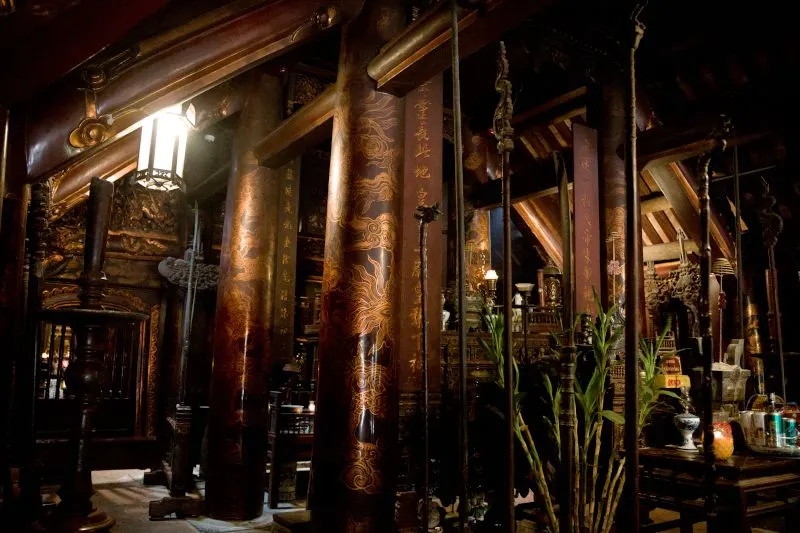
The memorial stone of Lý Thái Tổ
The memorial stone of Ly Thai To (Lý Công Uẩn) serves as a tribute to the founder of the Lý dynasty, which succeeded the Dinh and Early Lê dynasties. He became the first emperor of the Lý dynasty in 1009 after moving the capital from Hoa Lư to Thăng Long (modern-day Hanoi). Since then, Hanoi has become the capital for over 1,000 years and has functioned as Vietnam's political, cultural, and economic center.
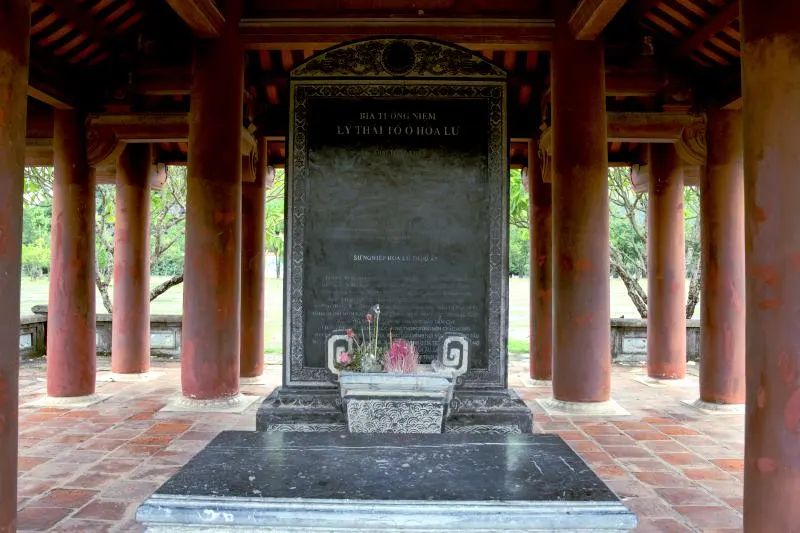
3. Trang An boat tour
The third activity we joined was the Trang An boat tour. The boat tour offered a scenic exploration of the landscape, featuring limestone karsts, caves, and temples. This area is a UNESCO World Heritage Site and is often called Halong Bay on land due to its breathtaking natural beauty.
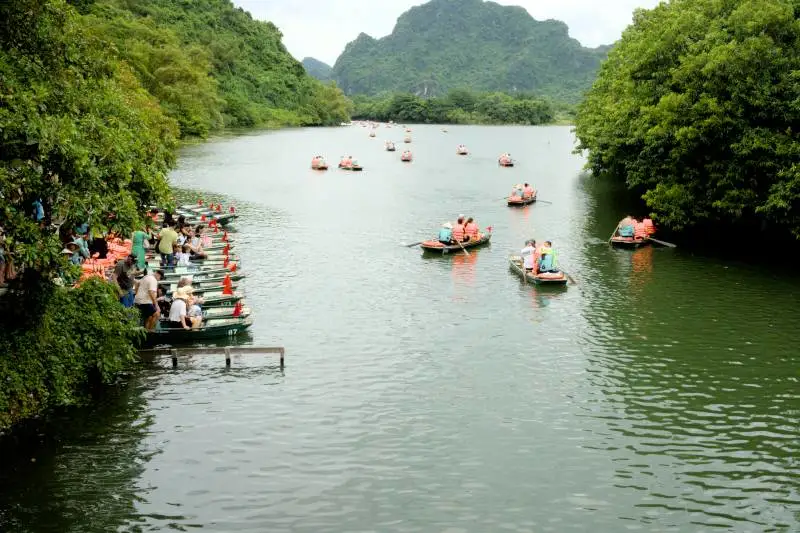
After purchasing the ticket, we joined two young locals on a small boat and started our journey. The ticket price is 250,000 VND per person. There are three routes available for the boat tour. Today, we followed route 3. The entire boat trip takes about two to three hours.
Our boat glided through the river, surrounded by towering limestone hills and lush greenery. It was very relaxing to sit there as the water was very calm today. We passed through various caves and also a few temples. Each time, we were allowed to disembark and explore for about 10 to 15 minutes at each temple.
The first temple we visited was the Trinh Temple. It is very easy to recognize because there are two large statues of carbs at the entrance.
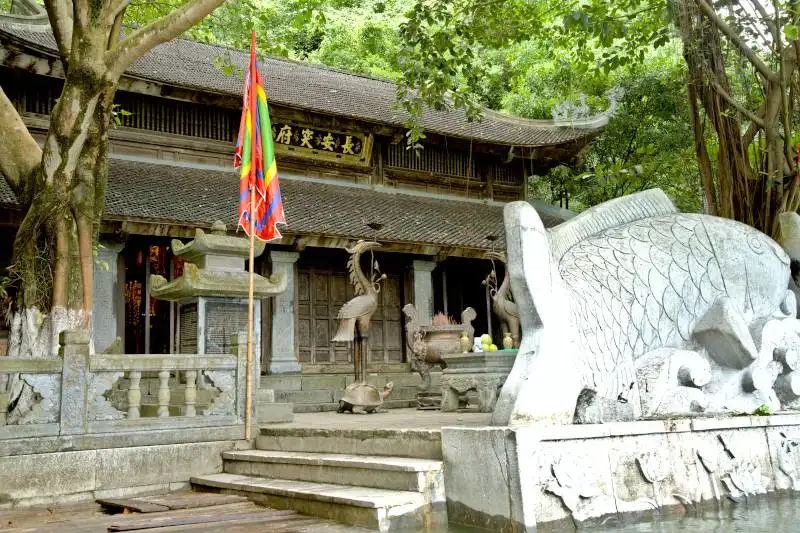
Then, our boat arrived at the Lam Cave, which has a very narrow passage. We had to lower our heads to pass through the cave.
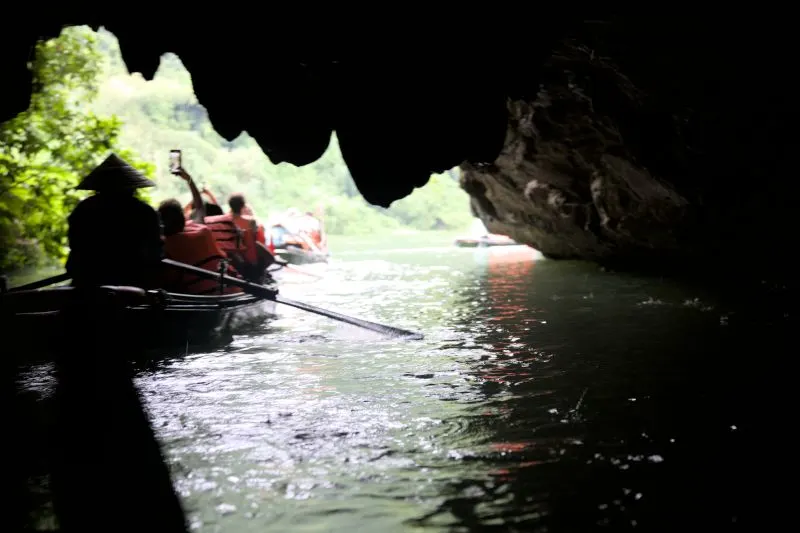
Next, we arrived at Cao Son Temple, which is dedicated to the god of the mountain.
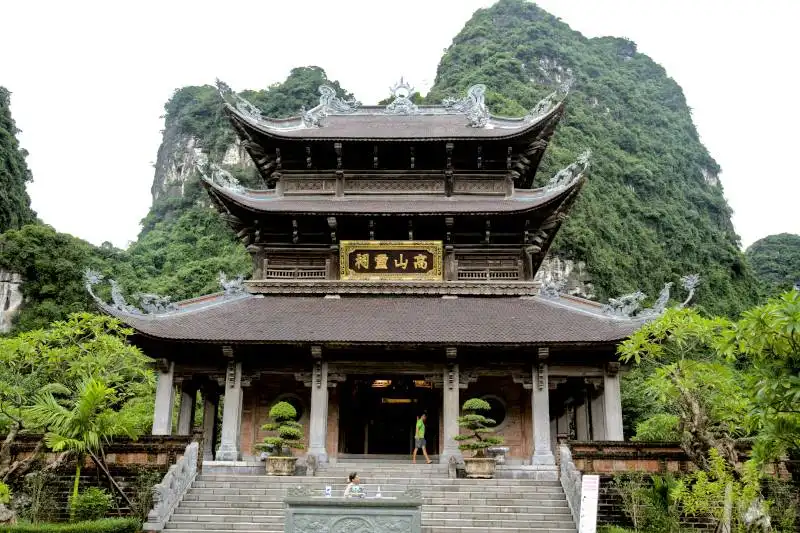
After that, we passed through another cave called Vang Cave, again with a narrow passage and a low ceiling nearly touching our heads, so we all had to lower our heads as much as possible.
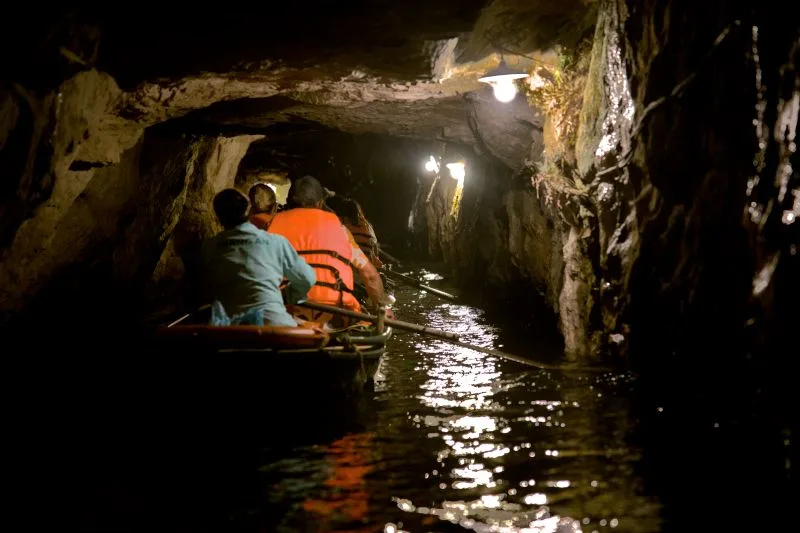
The last site we visited was the Vu Lam Royal Steps. This place once served as a military base during the Tran dynasty. It was used to consolidate the forces and counterattack the Yuan and Mongolian invaders. The king also practiced Buddhism there.
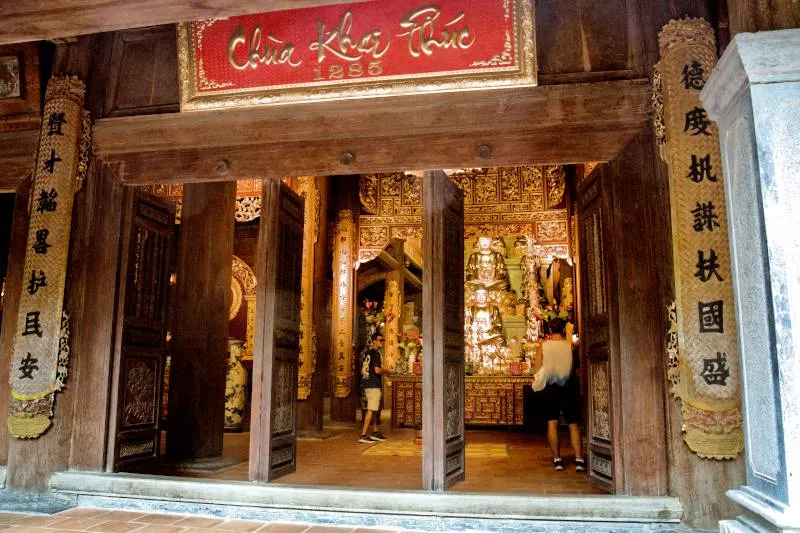
The most striking view at this place is the building that appears half-submerged in water in front of the Royal Steps. It is, in fact, part of the Vu Lam palace. The half-submerged position creates a stunning visual effect as our boat slowly passes through. The variation of water levels, especially during the rainy season, can cause part of the structure to appear submerged.
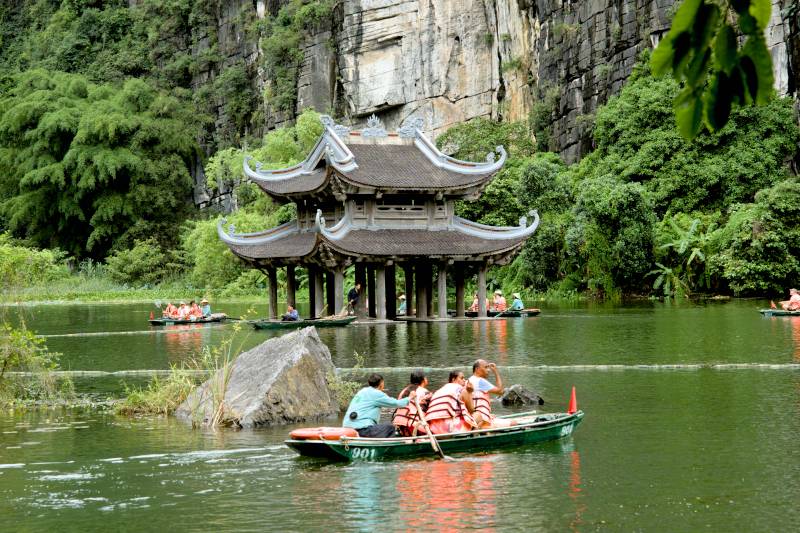
The above places are the top three destinations we chose to visit during our overnight stay in Ninh Binh. If you are planning a trip to the northern part of Vietnam, it is worth including Ninh Binh as one of your destinations, along with Hanoi, Sapa, and Ha Long Bay. We have written separate articles about things to do in each place. You can check out our articles here.
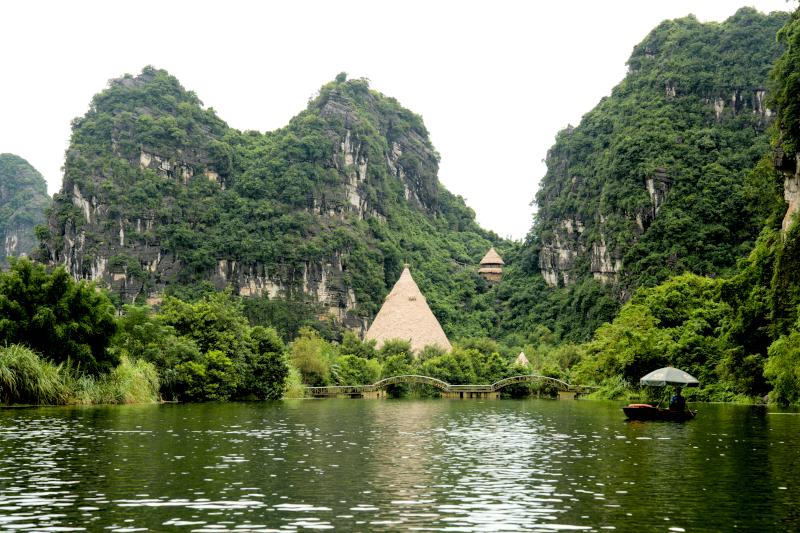
🎞️ Watch the video shot during our trip
Please watch the video we made for our trip on YouTube. As below:
